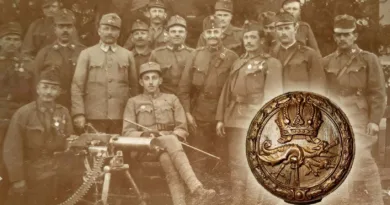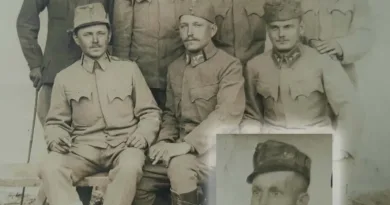Badge for skilful drivers
A new post about an excellent badge by Gábor Széplaki:
Already in an earlier post (here) brief mention was made about the formation of the car driver units of the Monarchy. This post will be about the skill award introduced to this profession.
In the Army of the Monarchy, an award was introduced in 1912 for soldiers of car formations. For well-qualified non-commissioned officers and crew members of the Royal Hungarian Army, it was regulated in Circular Decree No. 77352/7, published on August 21, 1912.

The material of the award is “tombac tin” according to the regulation, but also gold gilded copy made of thin copper plate is known. The badge is circular with a diameter of 460 mm at the outer edge, a smooth part delimited by thin edge lines protruding to a thickness of 70 mm was formed, on which oak and tan branches fastened to each other with a ribbon tied at the 6 hours run around both sides. The branches running in a circle are crowned by two stacked / mirrored car weapon insignia from which lightning strikes.

In the middle of the award is an Austro-Daimler M09 military transport truck traveling to the right in a hilly area with a very accurate and detailed representation. The elaboration is so detailed that even the tracks of previously passed cars can be seen on the dirt road.

The vehicle in question was manufactured between 1909 and 12, so when the award was introduced, it may have formed the backbone of the Monarchy’s early military cargo fleet. The M.09 model was equipped with an 80 hp engine. This type was referred to as Bison, Jaguar and Wisent, respectively. There was also a heavier version with a 90-horsepower engine called the Goliath.
The award was given to drivers who have been “well-proven” over a long period of time, as well as to car maintenance crews, and has also been used to recognize particularly outstanding individual performance. This visible sign of recognition was donated “by the head of the 3rd department of the Ministry of Defense based on the proposal made by the instructor of locomotion equipment”.

On the back, the standard Ω-shaped, vertical tab was soldered to secure the skirt over the right pocket.




